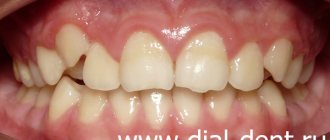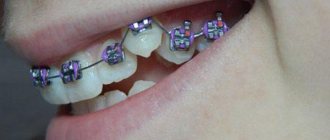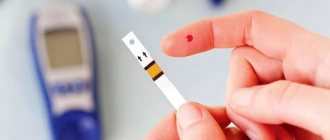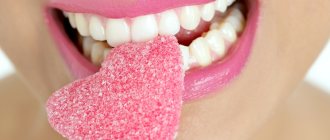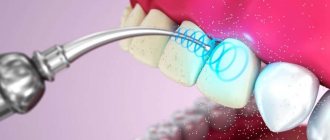Signs that make it easy to determine a person’s character by their teeth
Shape of teeth
says a lot about a person, and you can determine
the type of person by his teeth
by paying attention to the following signs of the dentition:
Upper incisors
| People with long incisors They are usually the life of the party, but at the same time they persistently strive for their goals and are quite open in communicating with others. Large incisors most often occur in adamant, stubborn people who persistently pursue their goal. Despite their difficult nature, those with large teeth are distinguished by their sincerity. Large gap between teeth betrays the explosive nature of their owner. In addition, the hole indicates an addiction to risk, which is not always justified. |
Fangs
It is generally accepted that large, sharp teeth
, including fangs, speak of a person’s aggressiveness. In fact, this is not always the case. In most cases, such teeth reveal a loving person. They can also talk about determination.
For example, if a woman’s upper canines are large and long
, then this can emphasize her kindness and humor.
Evenness of teeth
| A person's character can be determined by the curvature or straightness of their teeth. Ideal dentition speaks of a balanced, calm character. Such people are not afraid to make decisions and take responsibility. They are eloquent, self-confident and ready to go towards their goal no matter what. Uneven teeth speaks of the good intuition of the owner of the teeth. |
A person’s small, fox-like teeth can also tell about a person’s character.
— owners of such dentition are often characterized by lust.
Protruding teeth
characteristic of stingy people.
Teeth size
Strong large teeth
testify to a person’s courage, strength and kindness. Such people are most often long-livers.
| They will tell you what character the girl has and small teeth - often their owners are quite secretive and reserved natures. They have a small number of friends. Often people around them simply do not understand them, considering them strange. What do sparse teeth a person does not need to think for long - such teeth indicate people with a wild imagination, who always have a fresh, interesting idea in their heads: they can often even be considered strange. They are also distinguished by their tenacity of character and always go towards their goal. |
Small teeth
, among other things, can talk about greed. Such people have a hard time parting with money and are certainly not ready to spend it on others, be it relatives or friends.
Presence of damage
The presence of damage to the dentition can also indicate the character of a person
So, if
the upper row of teeth is damaged
, this will indicate difficulties in unlocking your potential, and if there are
problems in the lower part (especially in the left)
, you should think about problems in family relationships.
Function and role of fangs
The main function of the fangs is to tear and hold food. In addition, canines are the teeth that are least susceptible to caries. These are the most powerful and strong teeth, which bear quite a large load. If a person suddenly lost his fangs, then:
- perhaps he would have problems with diction;
- the entire load would fall on the weaker neighboring teeth, which in the near future would either become deformed or become loose;
- the dentition would lose its aesthetic appeal;
- the process of infection of teeth with caries has accelerated, since it is the fangs that are the barrier to the “creeping” of this problem from the molars that are most susceptible to it to the incisors;
- Tooth enamel is the hardest human tissue the body produces, but even it can wear down and wear down over time. Fangs are an excellent shock absorber for the contact of the upper and lower jaws; in their absence, tooth enamel would wear down several times faster.
Raisins are worse for teeth than chocolate
Not all sweets are equally harmful to teeth. Sugar from various foods is a breeding ground for bacteria, which create acid that destroys teeth. Foods that get stuck in teeth, including bread, chips, and dried fruits, are often more harmful than those that dissolve quickly (chocolate, chewing candies). At the same time, it is better to eat sweets right away than to have many snacks throughout the day, constantly feeding bacteria.
Bite correction: has it always been welcomed?
Today, many people turn to orthodontists to get rid of gaps between their front teeth. But in ancient times people were in no hurry to do this. This feature was considered a sign of happiness and prosperity. However, modern doctors, on the contrary, convince patients to correct this defect. Otherwise, the gap will begin to cause physical discomfort, which is by no means associated with a prosperous life.
We are waiting for them to be forgotten. How to get rid of unnecessary toys without child tantrums
In a generous carpet of eggshells: how broccoli is grown in Vietnam
Chicken breast in a new interpretation. Add onions, sour cream and Indian spices
Is it worth attaching importance to signs?
There are many superstitions that modern people inherited from their ancestors. Today, some people do not attach importance to signs. Other people, on the contrary, take them seriously. Attitude towards superstitions is everyone’s personal choice. But you need to monitor the health of your teeth and oral cavity from childhood.
It is necessary to visit the dentist regularly, treat diseases in a timely manner, and observe the rules of hygiene. These activities will help you maintain good health and avoid many problems.
Found a violation? Report content
Anatomical structure
The anatomy of a human tooth suggests that it is conventionally divided into 3 parts: root, neck and crown. The crown is the part that rises above the gum; it is covered with enamel - the strongest tissue that protects the tooth bone from the negative effects of acids and bacteria. There are several types of crown surfaces:
- The facial is the surface on the side of the lip or cheek.
- Occlusion is the surface in the area of closure with a paired tooth, which is located on the opposite jaw.
- Contact - the surface of the crown, which faces the teeth located in the neighborhood.
- Lingual – internal part. It faces the inside of the oral cavity, that is, the surface that the tongue touches during conversation.
The neck is the part that is located between the root and the crown , connecting them, covered with cement and closed by the edges of the gums. The root is the part with which the tooth is attached to its socket. Taking into account the classification type, the root can have one or more processes.
Histology
The histological structure of all teeth is exactly the same, but all of them have a different shape, taking into account the specific function they perform.
Enamel. It is a durable fabric that consists of 95% of various salts such as zinc, magnesium, copper, strontium, fluorine and iron. And 5% consists of substances such as carbohydrates, lipids, proteins. In addition, the enamel contains a liquid that participates in physiological processes.
At the same time, the enamel also has an outer shell , which is called the cuticle; it covers the chewing surface, but over time the cuticle tends to wear off and become thinner.
The basis of the bone tissue of the tooth is dentin - a set of minerals surrounding the root canal and the entire dental cavity. Dentin tissue contains a large number of tiny channels through which metabolic processes take place and nerve impulses are also transmitted through the channels.
Root structure: pulp and periodontium
The cavity inside the tooth is formed by the pulp - this is a loose and soft tissue, penetrated through and through by nerve endings, as well as lymphatic and blood vessels.
The structure of the roots looks like this. The root is located in a special hole - the alveolus , in the bone tissue of the jaw. The root, like the crown, consists of mineral tissue - dentin, covered on the outside with cement.
The root ends with an apex , through its opening blood vessels pass that feed the dental bone. The number of roots can vary depending on the functional purpose of the teeth, from 1 root in the incisors to 5 in the chewing teeth.
Periodontium is the connective tissue that fills the gap between the jaw socket and the tooth root. The fibers of the tissue, on the one hand, are woven into the cement of the root, and on the other, into the tissue of the jaw bone, due to this the tooth is firmly attached. In addition, through the periodontal tissue, the feeding elements of the blood vessels can enter the dental tissue.
Possible consequences
The main problem of microdentia with preserved functionality of the dentofacial apparatus is the psychological discomfort that the patient experiences when realizing his defect. This is not as harmless as it might seem at first glance.
A person’s psychological state can have a decisive impact on his quality of life, cause central nervous system disorders and even lead to physical illness.
If microdentia is accompanied by functional and organic disorders, somatic diseases are added to psychological problems. This may be a gastrointestinal disease due to poor chewing of food, asymmetry disorder and the effect of premature aging of the face when the lower third is reduced due to a low bite, etc.
Ultimately, the consequence of “short” teeth can be a general deterioration in health caused by both physical and psychological factors.
As for the influence of microdentia on the condition of the dentofacial apparatus, it can be expressed in the following:
- Displacement of the crowns distally , that is, backwards.
- Formation of tremata and diastemas , as a result of which the teeth lose stability in the mesial-distal direction and create an increased load when chewing on the periodontal ligament. It should be noted that normally all crowns have contact with each other in the proximal areas.
- Impaired diction due to the gap between the teeth and the low height of the clinical crown.
- Development of periodontitis and periodontal disease.
Summarizing all of the above, it is necessary to conclude that severe microdentia must be corrected.
How difficult and dangerous is it to remove an impacted tooth in modern dentistry?
In this publication, we will consider the features of treatment of dental anomalies - hyperdontia.
Here https://orto-info.ru/zubocheliustnye-anomalii/zubov/kolichestva/gipodentiya.html all the most important things about hypodentia.
Treatment methods
In cases where “short” teeth do not affect the functionality of the dentofacial apparatus, they are a purely aesthetic problem, and their correction is determined by the patient’s desire.
But if a functional problem is added to a cosmetic problem, the doctor must recommend mandatory treatment to the patient. Its method depends on the diagnostic results.
There are three main methods of treatment. Two of them are surgical – frenulum cutting and gum grafting. 3rd – prosthetic. Sometimes orthodontic correction is performed before microdentia treatment.
Lip frenulum trimming
If the cause of “short” teeth is a long frenulum hanging over the crowns, it is trimmed and sutured. The operation is performed under local anesthesia at any age .
Gum plastic surgery
The technology is used for microdentia of several adjacent teeth. A prerequisite for gum surgery is the healthy condition of the dental and periodontal tissues in the area of the operation.
Gumplasty or gingivectomy involves excision of the edge of the gum to expose part of the clinical crown and increase its height. As a result of the operation, the position of the gum line changes.
As an additional treatment after gum surgery, remineralization of teeth may be necessary, since the less mineralized part of the crown located under the gum may have increased sensitivity to mechanical and chemical influences. That is, the patient will suffer from hyperesthesia.
Veneers and Lumineers
Treatment of “short” teeth with veneers and lumineers is recommended for isolated, single microdentia, trema and diastema.
With the help of thin onlays fixed to the vestibular surface of the enamel, most visual defects can be corrected, and “short” teeth are no exception. Covering them with veneers and lumineers allows you to create the full effect of a normal size.
The advantage of the method is that with the help of veneering you can change the size of the crown in any direction, both in height and width. Its main disadvantage is the relatively high price, which increases when using lumineers or veneers made of high-quality materials, such as zirconium oxide, for example.
If none of the above methods are suitable for a particular case of microdentia, you can use prosthetics - installing artificial crowns or even bridges. The latter case requires the removal of a “short” tooth that cannot be corrected.

